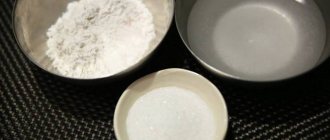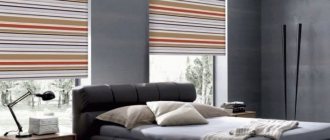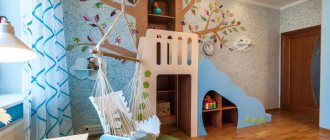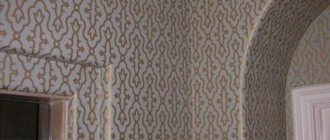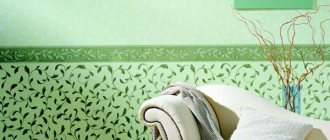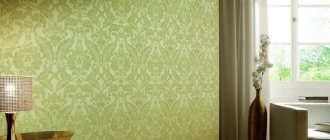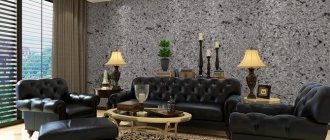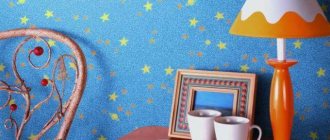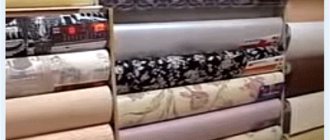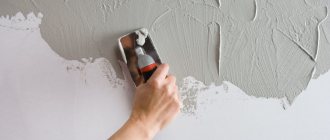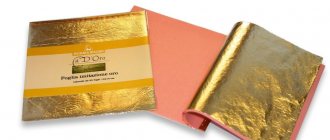What kind of glue is this and how to dilute it?
Attention
Paste is a special glue that is made from starch or flour.
The ingredients and their proportions for an aqueous suspension depend on which option needs to be prepared - thicker or diluted.
The most commonly used recipes are::
- from flour (mix boiled water and flour to a dough consistency, let cool and pass through layers of gauze several times to remove large lumps);
- from starch (prepared using a similar method, but instead of flour, starch is added, and then PVA glue is added to significantly increase the binding properties of the composition and make it transparent);
- dextrin paste (made from potato starch, due to which it will have to be heated on a baking sheet to 400 ° C, cooled until hardened, crushed into powder and only then mixed with water and sugar).
During the preparation of any of these pastes, it is necessary to add an aqueous solution of copper sulfate (at the rate of 10 g per 1 kg of flour or starch) to disinfect the mixture.
Flour paste is not so much a building material as a perishable product. It remains suitable for a maximum of one day of work, since it sours quickly: it is better to prepare it after the fact and use it immediately, rather than leaving it in reserve.
This mixture is excellent for fixing wallpaper, paper to cardboard and wood, and is suitable for painting and bookbinding. The simple recipe is also used as a basis when making papier-mâché for creativity - it is a safe material even if ingested carelessly.
How to cook paste at home
Making paste at home is not at all difficult. The main thing is to know a few rules:
- Flour should initially be diluted in cold water to avoid getting “dumplings” in boiling water.
- The proportions of the glue are determined by the desired thickness.
- For children's creativity, glue with inedible additives is not used.
- If an error occurs in the proportion, you can weld a little glue of greater or less thickness (as necessary) and dilute the finished paste with a new composition.
- Boiling water will help get rid of the excess thickness of freshly made paste.
For wallpapering
It is good to use two types of paste as wallpaper glue:
- starch;
- from rye flour.
For the first option, take a liter of water and half a kilogram of starch. Dilute the starch with cold water, stir, put on the fire and very slowly begin to heat. You need to continue heating the paste until it thickens. Be sure to stir the glue all the time while cooking.
For the second option, you will need two pans: a larger one and a smaller one. The water is divided in half between these pans. A large container is placed on the fire until it boils. Rye flour is diluted in a smaller container and mixed thoroughly. For wallpaper, you can add one and a half grams of vitriol to the flour. The mixture is carefully poured from the “cold” container into the hot one. The composition needs to be stirred. Cook for no more than 5 minutes.
For heavy wallpaper, it is recommended to add 10% wood glue - 1/5 of the volume of water. This will help the non-woven or vinyl wallpaper stick better to the wall.
For papier-mâché
Recipes for papier-mâché paste vary. In one of them, it is recommended to take three glasses of water and one glass of flour. Add a pinch of salt to the water. Sift the flour and add warm water to one glass for now. You need to mix everything thoroughly, then add two glasses of water, already heated. Bring the mixture to a boil and cook for 10 minutes to thicken. The paste must be cooled before use.
Advantages and disadvantages
Important
Modern adhesives for wallpapering have a significant drawback - they are inconvenient for working on surfaces primed with drying oil or walls covered with old paint. Only a paste can handle such a base during repairs.
Thanks to its main advantage - the ability to easily remove wallpaper pasted with its use - it is still used on a par with professional building mixtures. Among other advantages of a homemade recipe, the following are also mentioned :
- effective adhesive property;
- easy dismantling process (soaking with warm water);
- the ability to wash stains without problems;
- quick preparation of the mixture, which does not require special skills;
- a minimum set of cheap ingredients;
- long-term operation.
The only drawback of the paste is its instability to moisture , so even a beautiful renovation runs the risk of being ruined due to water getting on the finished walls. But even this problem can be overcome if you add special additives when cooking the paste (usually simple PVA glue or a similar binding element that will add strength).
Another drawback is the short shelf life, which is also related to the problem of humidity. It is needed to make economical cosmetic repairs or to be able to frequently change the color of the walls. The paste will eliminate problems with removing old layers.
Homemade flour glue has many more positive aspects . In terms of price, it is cheaper than branded store brands, completely safe in everyday life (non-toxic, no pungent odor, fire resistant) and mixes within a few minutes, then you can immediately proceed to the stage of gluing the wallpaper itself.
What do you need to make paste?
To cook a paste from flour, you need to take a suitable pan and a second container with a volume of at least half of the selected pan. You also need a fine colander or a large sieve. Be sure to have a stirring spoon ready to get rid of any lumps. Naturally, you need a stove, and if you have to cook in the field, you can use a camp stove or a gas burner.
The materials for flour paste you will need are flour and water. If you are preparing a starch version, then it is recommended to add PVA glue to it for better adhesion.
What kind of flour should I take?
The choice of flour for paste is the opposite of what we select for pies and other homemade baked goods. It is better to cook the paste from low-grade flour, since it contains more small particles of bran than the highest grade. It is worth paying attention to such a product as wallpaper flour. The name itself indicates what it is used for - for wallpapering walls. Bran particles contain a larger amount of viscous gluten than the middle part of the grain.
As for the crop ground into flour, the best would be wheat, corn or rye. Rice and buckwheat flour do not contain the required amount of sticky substances, so they are not suitable. Rye flour for paste is used with caution because it can leave dark marks. If you need to make a paste from flour for dark surfaces, then rye flour will be the best, as it has excellent adhesive properties.
Additional Ingredients
A number of ingredients are added to the flour paste to improve adhesive properties. To ensure that papier-mâché structures adhere well, wood glue is added. True, it can make the surface darker. A substitute can be gelatin, previously diluted with water. The ratio of flour and glue (diluted gelatin) will be 200:75.
If you need to ensure the whiteness of the surface, for example, when wallpapering a ceiling, then you can use PVA glue. You can, for example, make a paste from corn starch and add “Stolyar” glue there - PVA with a water base.
It is good to add vitriol to wallpaper glue. Since flour paste is an attractive treat for household insects, it is advisable to scare them off with something. The role of the “scarecrow” in such a composition is played by vitriol. It also protects against fungus.
When flour glue is used in textile decorations, it is recommended to add vanilla sugar to add shine.
Requirements
The paste is positioned as a universal product that can be brewed and used for different areas, and not only for repairs. This does not mean that the mixture may be of poor quality - the wrong consistency will not fix the wallpaper on the wall, so it will peel off immediately. To understand which composition will be ideal, you should focus on the following requirements:
- Moderate thickness (the glue should not be too viscous, but should stretch. If the mixture turns out to be too liquid, you do not need to immediately add a new portion of flour to it - you can set the paste aside for 1-2 hours so that it reaches the dough condition on its own).
- Neutral color (the mixture should resemble classic glue - be white with an acceptable shade of yellow. If PVA was added, the result may be more transparent, but sharp tones are excluded - this is a sign of defect).
AdviceSome types of flour (for example, corn) can give a richer shade. But it’s better not to take specific varieties as a basis. They will be more expensive, and they are not suitable as a construction ingredient.
- No lumps (if kneading too intensively, lumps may appear - you need to get rid of them by sifting through gauze or carefully selecting them by hand. Do not try to crush or grind them, otherwise unsightly lumps may form under the wallpaper).
The main advantage of the paste is its basis. Since it consists of environmentally friendly materials, its organic composition can turn into a big drawback over time. These components are good food for all kinds of insects and microorganisms, so it is advisable to add products to the mixture that will make the composition “inedible”, then the wallpaper will not become a habitat for parasites.
How to make from flour or cook from starch: recipe
When choosing the main ingredient - flour or starch - focus on the specific wallpaper where the future glue will be used:
- For gluing light-colored canvases, it is recommended to use exclusively wheat flour (the most popular and convenient option for creating paste at home).
- Dark varieties (rye and corn flour) can leave marks, so they are more suitable for muted designs.
When the main component is determined, you should start mixing:
- Flour must be poured into a container (preferably a bucket or pan).
- Pour it with plain water (in a ratio of 1:3), stir until smooth.
- Now place the container on the stove, cook over low heat until it boils, stirring constantly.
- After boiling, remove from heat, strain well, and cool.
- When the mixture has cooled, you can start gluing the wallpaper.
Important
The quality of the mixture can be checked by dipping a spoon into the glue. A properly prepared composition should flow smoothly, and when touched, be sticky and elastic.
If it does not thicken within a few hours, you need to add a little warm water and stir again. But even a partially incorrect consistency will be useful during repairs. For example, it is convenient to mask small gaps and cracks with a thick composition, and with a liquid composition it is convenient to prime the surface of the walls for good adhesion.
Professionals do not recommend using the highest grade for this recipe, because compared to cooking, the quality of flour here plays a different role. The less processed the flour, the more particles of bran and gluten it contains, which is the basis of the glue. Therefore, it would be safer to take 2nd grade or even whole grain flour .
We invite you to watch a video on how to prepare paste at home:
Apartment renovation is an important event in the life of everyone who decides to start it. On our website you will find articles on how to prepare wallpaper for hanging, update it, and also mask and correct defects: stains, bubbles, wrinkles, mold, yellowness, peeling off the wall.
With the addition of PVA
Making wallpaper paste from flour is not difficult, but people often become interested in how to use PVA glue. Since this component cannot be used in its pure form for wallpapering, a solution can be prepared from it.
To do this you will need to take glue and cold water in a ratio of 1:2. As in previous recipes, both components must be mixed until a homogeneous mixture is achieved.
The difference between this product is that it is not stored for too long. Therefore, you should not prepare it “for the future.”
If desired, you can add starch or flour to the recipe. This will increase the volume of the finished mass and extend its shelf life. The selected powder should be taken in an amount of one third of the taken volume of PVA glue.
PVA diluted with water, as well as a paste made from flour or starch, are constantly used in creativity in the manufacture of papier-mâché. This is well written here.
What should the paste be like?
When it became clear how to prepare wallpaper paste, it is also necessary to mention the basic requirements for it.
The home composition should be:
- easy to prepare;
- easy to use;
- environmentally friendly.
In addition, a self-created paste should have excellent adhesion to different substrates. This is how a home remedy differs from store-bought products.
How to make paste waterproof
Having chosen a method for making wallpaper paste, people often ask about the water resistance of this composition. After all, such a product is often used in rooms with high humidity, which is why it must be able to withstand exposure to dampness.
Made from flour or starch, wallpaper paste can easily be made resistant to liquids. To do this, you will need to add regular PVA or office glue to it. It is difficult to indicate a clear amount of the additional component - it must be introduced into the mixture gradually so that it does not become too thick.
Recipes for flour paste for wallpaper
Now it’s time to figure out how to cook wallpaper paste with the addition of various components. You should start making the composition only after clearly defining the type of wallpaper to be glued.
They can be simple paper, heavier in weight or textile. Each type of product has its own recipe, and the finished mixtures differ from each other in thickness and strength.
Recipe for light wallpaper
The simplest DIY wallpaper paste is intended for light repair work. It is great for light weight products.
You need to make a paste for wallpapering from two components - flour and water. They should be taken in a ratio of 1:4. Additionally, you will need to take two bowls of different sizes.
The first step is to make a thick dough in a smaller container, and then move the resulting lump into a larger one and dilute it with the remaining amount of water.
Next, the mixture must be placed over low or medium heat and brought to a boil. Immediately after this, the paste can be removed from the stove and used.
For gluing heavy vinyl wallpaper
Answering a frequently asked question about how to prepare a paste from flour for wallpaper, you need to distinguish between the compositions for light and heavy (vinyl) products. In the first case, the composition should not be too thick, in the second, the opposite is true.
Therefore, if you need to glue vinyl wallpaper, you need to turn to another recipe for wallpaper paste made from flour. The proportions of these components are 1:2. And the cooking process here will be the same as in the previous method.
High strength composition
This product is intended for priming walls. It is made from the following ingredients:
- distilled water – 2 liters;
- gelatin – 10 g;
- glycerin – 8 g;
- wheat flour – 300 g;
- medical alcohol – 40 ml.
The step-by-step recipe will be:
- Dilute gelatin in a glass of water and leave for a day.
- After the specified time, combine the resulting mixture with a small amount of water and place in a water bath, stirring occasionally.
- Separately, dilute the flour with water so that a liquid dough comes out, and then stir until the lumps are eliminated.
- Combine the mixtures together and send the whole mass to a water bath.
- Bring the mixture to a boil and add glycerin.
- Mix thoroughly with a wooden spoon or spatula, remove from heat and leave at room temperature until cool.
For pasting textiles
Another option, how to make wallpaper paste, will help people who use textile products.
In this recipe the main ingredients are:
- 1 tbsp. sifted flour;
- 1 glass of cool water;
- ¼ tsp. Sahara;
- a pinch of vanillin.
The first step to making wallpaper glue from flour is to combine the flour with ¼ cup of water and mix well.
Then you need to pour all the remaining liquid into a separate container, add sugar there and put it on medium heat.
As soon as the water boils, without removing from the heat, add the flour mixture and cook until the mixture reaches the desired thickness.
Next, remove the container with the paste from the heat, immediately add vanillin to the mixture, stir the mixture and let it cool.
How to enhance the effect of purchased wallpaper glue
Unlike homemade wallpaper paste, store-bought paste does not guarantee high efficiency in all cases. The main problem with compounds purchased in hardware stores is that the wallpaper glued to them begins to peel away from the surface after a while. But fortunately, it is quite possible to correct this situation.
The effect of industrial glue is enhanced by regular granulated sugar. It must be diluted in the composition, taking at the rate of 1 kg of sugar per 10 liters of glue. The resulting mixture will please all craftsmen, since it will hold wallpaper of absolutely any weight.
How to store?
It will not be possible to store such a natural solution for a long time , otherwise all the adhesive properties of the mixture will gradually deteriorate. If the remaining glue is planned to be used further, it must be poured into a new container with a tight-fitting lid and placed in the refrigerator. The product can be stored in the cold for a maximum of 1 day. Therefore, experts recommend boiling it 2 hours before use and try not to store it for longer than a day.
When the consistency of a too thick mass has already undergone changes (the proportions of water or flour have changed), it has an unpleasant sour smell, the workpiece must be boiled again over low heat, then add a spoonful of alcohol and stir thoroughly until smooth.
Advice
One of the effective recipes for extending the service life of the paste is to prepare it from flour with the addition of carbolic acid (no more than 25 g per 10 liters).
We described how to properly store wallpaper and glue diluted for it in this article.
Savings during renovations sometimes pay off. The homemade equivalent of wallpaper glue, paste, is one of the successful life hacks that have remained relevant for decades. The mixture is safe, easy to prepare and cheap, not to mention the quality is not inferior to store-bought building materials.
